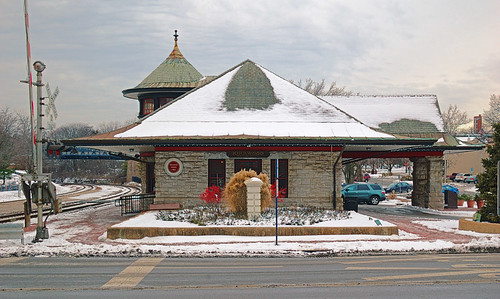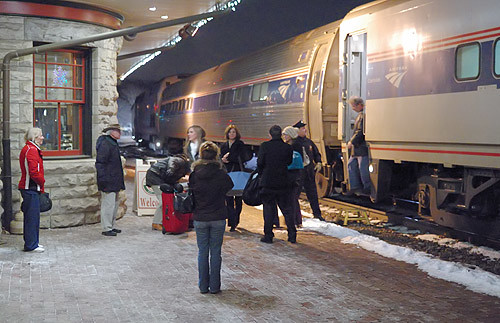
These stained glass window are at
Saint Francis Xavier Church, at
Saint Louis University. Located above the old high altar in the apse, these windows depict angels and cherubim, the sun, moon, and stars, and a rainbow. The windows of this church were made by
Emil Frei, Sr., inspired by the
Cathedral of Our Lady of Chartres, and are considered his finest work. As I've mentioned before, this church's windows are exceptionally difficult to photograph faithfully; in particular, the blue colors are a bit off, being relatively darker than seen here, but still showing a saturation not possible on a computer monitor.
I took this photo at the request of
Tina, a.k.a. Snup.
This rainbow is seen in scripture, in
Revelation 4, where Saint John describes his vision of Heaven:
“And there was a rainbow round about the throne, in sight like unto an emerald.”; this passage parallels
Ezekiel 1, which also mentions a likeness of a rainbow. See also
Revelation 10. We are also reminded that the rainbow is a sign of God's covenant, as seen in
Genesis 9. This window is also reminiscent of Sirach (Ecclesiasticus)
chapter 43, which also praises the sun and moon:
“Look upon the rainbow, and bless him that made it: it is very beautiful in its brightness. It encompasses the heaven about with the circle of its glory, the hands of the most High have displayed it.”
In his encyclical letter
Ad Caeli Reginam (1954), Pope Pius XII noted that the rainbow is a symbol of the Blessed Virgin Mary as Queen of Peace. The beauty of a rainbow often occurs after the violence of a thunderstorm, and so a rainbow is a symbol of heavenly promises: this encyclical recalls the violence of the Second World War, and points to the promise of peace to come. Prophetically, the rainbow was invoked by Pope Pius XI in his encyclical
Mit Brennender Sorge (1937, written in German and not Latin), which denounced the Nazi policies of Germany; regrettably this encyclical went unheeded and
“the storm of religious war, instead of the rainbow of peace,” blackened the German skies.
The scientific explaination of rainbows — light being doubly reflected inside of water droplets — was independently discovered in the 14
th century by the Persian physicist Kamāl al-Dīn al-Fārisī and by the Dominican theologian and scientist Thierry of Freburg.
Rainbows are similar in nature to other refractive optical phenomena such as the nimbus and glory, and are a natural inspiration for the halo around the head used in depictions of Saints, as well as in the larger
aureola or
mandorla surrounding the body of Christ and the Virgin in many artistic depictions — although there are certainly other factors which make these symbols appropriate.
The beauty of a rainbow may exceed the beauty of a flower, but it is more transient and unobtainable. Although a flower is a concrete, possessable thing, a rainbow is not. But a rainbow is more universal, and each rainbow is more similar to its peers than a flower is to those of its fellow species. So a rainbow is a natural symbol of higher things.









